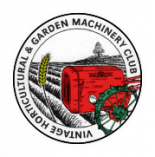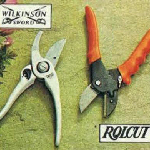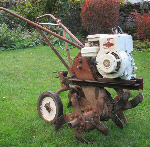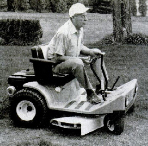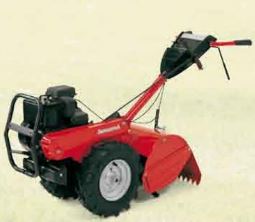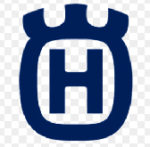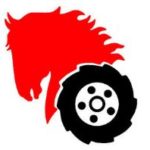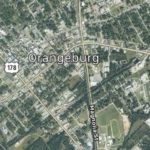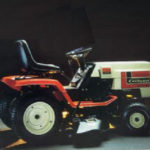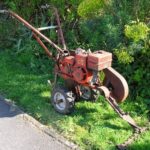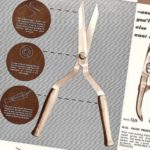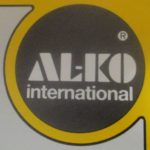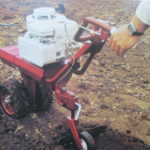Quiz 2024 – Locations and Countries
December 11, 2024 in Articles
Here are twelve questions for a short quiz.
Usually, the questions are quite random but this time they have a theme! How good is your machinery/manufacturer/geography knowledge as the questions and answers all relate to places around the UK and the World.
Reading the questions and answers it becomes apparent how widespread machinery manufacture is before the products even reach the shops in the UK. I’m also amazed how many machines manufactured abroad have had long journeys by sea, rail, road or perhaps air to get to their destination – they may be better travelled than many people!
A pencil and paper is handy to write down the answers. Many of the manufacturers and locations have been mentioned on the VHGMC over the years – also the pictures and captions may help with some.
As always, the answers (which are sometimes much longer than the questions) are at the bottom of the page.
Questions:
1: Thomas Green & Sons of lawn mower fame manufactured numerous machines. They had ironworks in Leeds, but which other city did they work from?
A: Birmingham
B: London
C: Coventry
2: The Bean tool frame tractor was initially a mid-1940s machine but had design changes passing through several manufacturers. The first machines were built at the Blackburn Aircraft Factory, but in which county?
A: East Yorkshire
B: Lancashire
C: Lincolnshire
(Get this tricky one right and gain bonus points!)
3. In the 1960s the Danish company Ginge set up a new factory far northwards in the UK to produce their lawn mowers. They were still manufacturing in Copenhagen, and had an office in Croxley Green, Herefordshire, but where was the new UK factory?
A: Grantham, Lincolnshire
B: Stockton-on-Tees, County Durham
C: Irvine, Ayrshire
4. In the 1970s, the companies of Ransomes and Hahn had a two-way agreement selling each other’s machinery in their respective countries. Ransomes was based in the UK, but in which country was Hahn?
A: Germany
B: USA
C: Switzerland
5. Flymo had associations with Toro and Norlett in the 1970s. They also had a foray with Morrison selling their imported mowers in the UK in the 1960s. In which country was Morrison based?
A: New Zealand
B: Australia
C: Canada
6. In 2021 Geoff Ravenhall restored Allett’s first ever MK1 production mower. It was made in 1965 and powered by a Reliant 3-wheeler four-cylinder engine and gearbox – read about it here on the forum.
Allett is firmly a British company with an amazing history of producing top-notch mowers, however, the company was sold in 1994 and moved north from its premises in Corby, Northamptonshire. But to where did it move?
A: Swansea, Wales
B: Arbroath, Scotland
C: Belfast, Ireland
7. Qualcast sold their mowers all over the world. Although we are used to seeing English adverts, it stands to reason that they must also exist in other languages. Advertising for the Qualcast Model C in 1923 carried the heading “Le Secret Des Belles Pelouses Anglaises” – but in which country did this advert appear? (And for a huge bonus point can you guess the translation of the advert heading?)
A: Canada
B: Austria
C: France
8. There are many secateur brands and designs in the UK. Rolcut made the anvil-type ones, but at which major show were they first exhibited by Rolcut?
A: The Chelsea Flower Show, London – 1927
B: Ideal Homes Exhibition, Olympia Exhibition Centre, London – 1949
C: The Royal Show, Newcastle – 1962
9. It can be surprising to find that a machine (or design) has been imported to the UK rather than being home-grown – the Merry Tiller is one such machine. In which country did the Merry Tiller originate?
A: Australia
B: Netherlands
C: USA
10. Many horticultural machines (now vintage), as varied as the Dixon ZTR mower, Billy Goat, and Bluebird Scarifier, were sold from the Garden Machine Centre, Sunningdale, Berkshire. Which name is usually associated with this address?
A: T. Parker & Sons Ltd.
B: Bob Andrews
C: John Allen & Sons
11: In the early 1980s, Solo Power Equipment Ltd of Brierley Hill, West Midlands (later moving to Chorley, Lancashire) imported the Solo Multimot system – it was an engine that could be attached and removed to power various garden machines/attachments. But where was the Multimot from?
A: Germany
B: Wales
C: Australia
12: The usual odd question/answer to finish: The Piaggio 3-wheel commercial truck was sold in the UK in the 1970s and advertised in greenskeeper magazines and the like. It was ideal for golf courses, nurseries or large gardens where it would be useful with a tipping rear body and up to half-ton capacity. Where did the Piaggio truck come from?
A: Andrews Lawn Edgers Ltd
B: Italy
C: Sunningdale, Berkshire
Answers:
1: B: London. Adverts for Greens lawn mowers often show the addresses Smithfield Ironworks in Leeds and New Surrey Works, Southwark Street, London – although earlier London addresses were shown in the 1800s for items including fencing, gates, and verandahs, and large items such as steam road rollers.
2: A: East Yorkshire. The Blackburn Aircraft factory, where the Bean tool frame tractor was made, was located at Brough, East Yorkshire. The town of Blackburn is in Lancashire…..but no aircraft factory.
3: C: Irvine. Ginge mowers were produced at a factory at Irvine Industrial Estate, Irvine, Ayrshire. In the late-1960s the cylinder mowers included the hand-propelled 12″ Prisma and 16″ Futura. Powered cylinder mowers featured the 18″ Meridia and 21″ Atlanta. The mowers were popular and in 1967 were said to have captured 6% of the British lawnmower market. Petrol rotary mowers followed in 1970. There is a VHGMC article about Ginge here.
4: B: USA. Hahn was based in the USA. Two garden-sized ride-on machines brought into the UK were the Hahn LTD 550 ride-on mower and the Hahn GT-700 multi-purpose tractor which could be fitted with a mower, snow blade, sweeper etc. There were Briggs & Stratton-powered pedestrian rotary mowers but these seem quite scarce in the UK.
5: A: New Zealand. Morrison was based in New Zealand. In 1980 the range of mowers advertised included 14, 16, 20 and 24″ Olympic cylinder models, and the M4B and Conquest rear-collect rotaries. In 1969 Gardening Which? magazine tested the Morrison Golden mower priced at £48, it had 4 wheels, rear grass collection, and a 3 hp Kirby/Tecumseh engine.
6: B: Arbroath, Scotland. In 1994 Allett Mowers was sold to Reekie Engineering. Production moved to Arbroath in 1995. Turfmech Machinery purchased Allett in 2007. The mowers are now made in Hixon, Staffordshire. You can read the detailed history of Allett Mowers on their website blog – here.
7: C: France. The heading is from a 1923 advert in France for the Qualcast ‘Modele C‘. The heading translates as “The secret of beautiful English lawns”. The mower could be purchased at L. F. Michon, 46 rue de la Bienfaisance, Paris.
8: A: The Chelsea Flower Show in 1927. The Rolcut secateurs were a success and in the 1930s advertised that they had an Award of Merit from the Royal Horticultural Society and a silver medal from the National Rose Society.
9: C: USA. The Merry Tiller originated in the USA. It was designed by Clayton Merry in 1947. Wolseley in Birmingham had the manufacturing rights in the UK. In 1953 the USA-made Merry Tiller was introduced to the Japanese market and was an immediate hit as it was a simple and lightweight machine with lots of attachments and uses at a sensible price – one never knows which countries machines may end up in!
10: B: Bob Andrews. The Machine Centre, Sunningdale, is associated with Bob Andrews. A wide range of garden machines from an array of manufacturers and suppliers were retailed. John Allen & Sons are associated with Allen machines, Motostandard, Mayfield, and Roper. T. Parker & Sons sold many items but also imported the Australian range of Deckson mowers in the 1970s.
11: A: Germany. The Multimot from the German company Solo consisted of a 1.5 hp 2-stroke engine that could be fitted to a number of different machines such as a hover mower, chainsaw, tiller, etc. There was an earlier Solo system before the Multimot. There are quite a few Solo machines including more traditional-powered rotary mowers in the UK.
12: A, B, and C. All three answers. Andrews Lawn Edgers Ltd, The Garden Machine Centre, Sunningdale, Berkshire, advertised the Italian Piaggio Vespa commercial trucks. The model VC600 could do 60 mpg and transport half a ton; the VC200 could carry slightly less but managed 100 mpg. Both were ideal for running around a horticultural or garden establishment but would later be replaced by machines like the Kawasaki Mule or John Deere Gator.
Footnote:
And that’s all the website front-page posts for 2024.
I was asked how long it takes to find and compile the twelve questions for December. Well, if we add up the hours then it will certainly total a couple of days. The questions were written in early September with this whole article page pre-loaded onto the website to publish itself on a set date in December.
It takes a while to find the questions (made harder this year because I decided to go with a ‘theme’ of locations and places), write the answers, cross-check everything for correctness, then find a picture for each and crop and upload, and a general bit of ‘nip and tuck’ to tidy up the questions and answers. And have the whole thing previewed on laptop/tablet/mobile to make sure it displays as intended.
To aid and assist….(or perhaps hinder)…the website spell-checks and grammatically susses everything out as I type but it gets very confused with manufacturers and machine names that it’s not familiar with. Then an analyzer (some AI malarky) decides to criticize the whole thing by giving a readability score out of 100. Anyway, you have read this far so the words must have been strung together right proper-like at my desk in Yorkshire. Happy Christmas!
